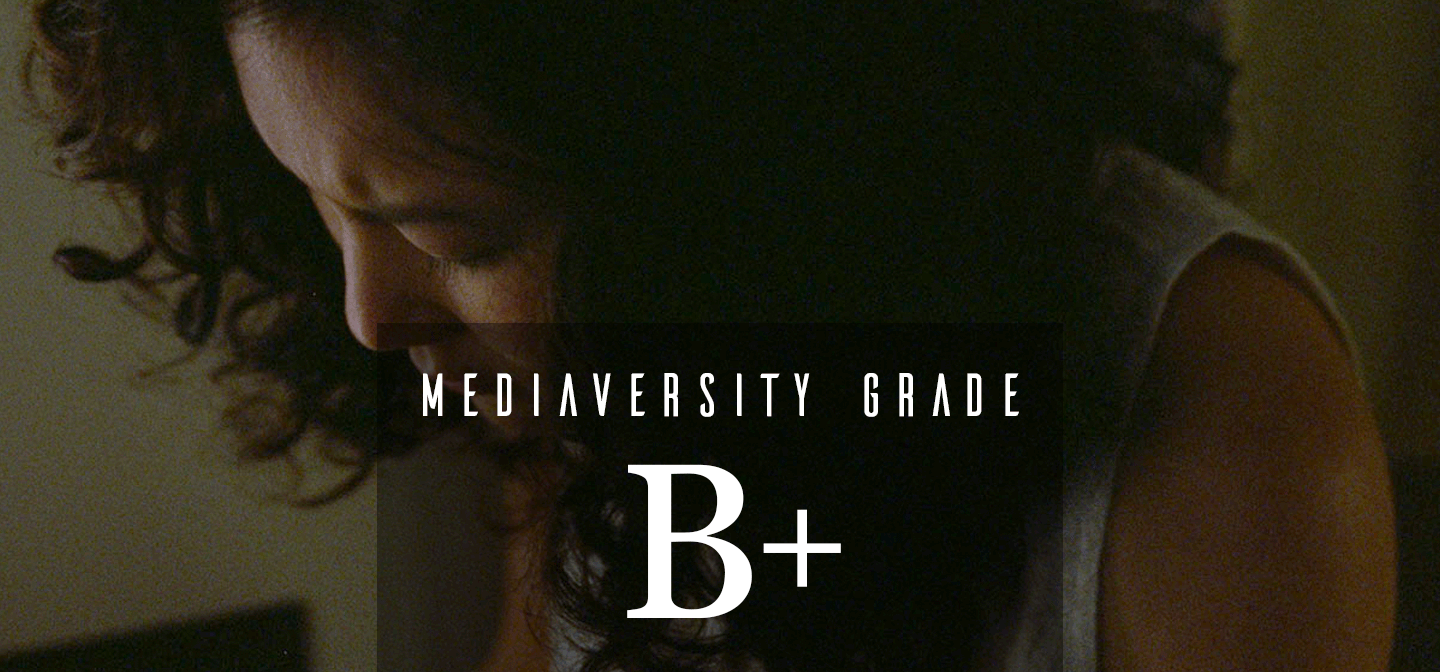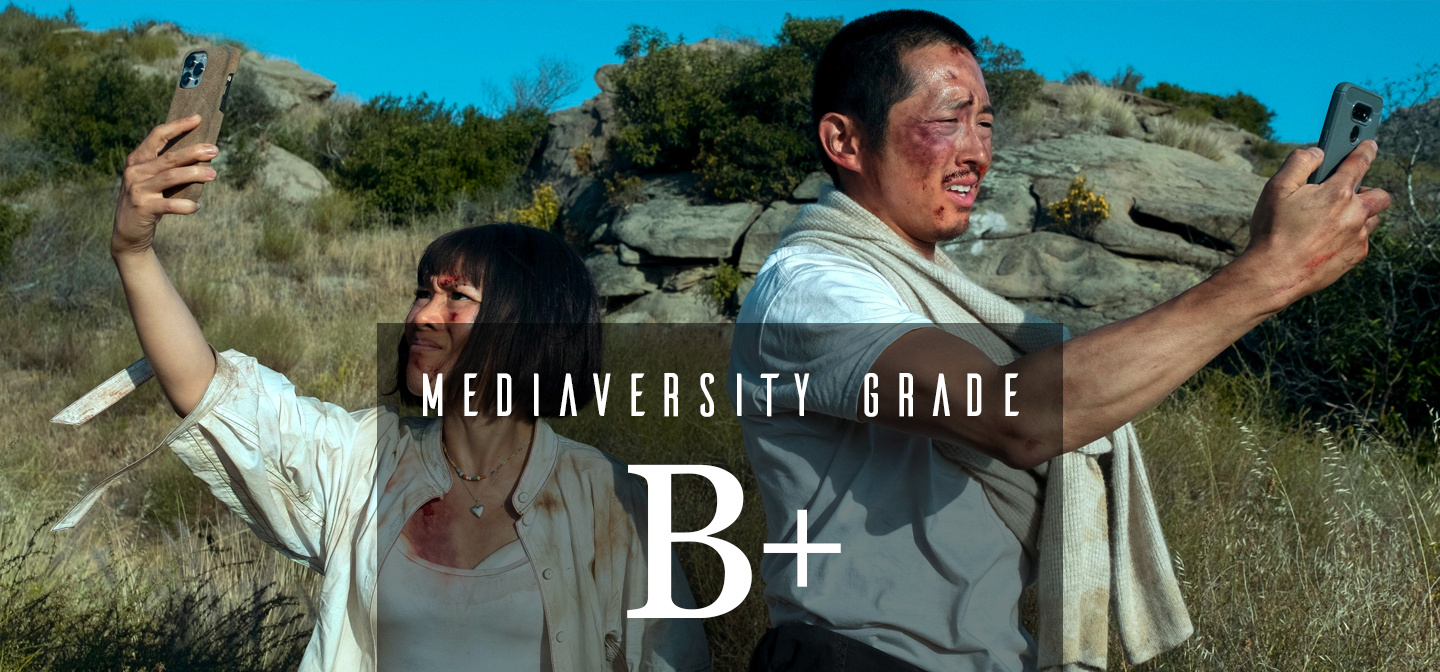Seagrass
“Seagrass incorporates themes of being Japanese Canadian and biracial with coherent, if sometimes heavy-handed language.”
Title: Seagrass (2023)
Director: Meredith Hama-Brown 👩🏻🇨🇦
Writer: Meredith Hama-Brown 👩🏻🇨🇦
Reviewed by Li 👩🏻🇺🇸
Technical: 3.5/5
Writer-director Meredith Hama-Brown premiered her feature debut, Seagrass, at Toronto International Film Festival last evening. The movie follows Judith (Ally Maki), a mom of 6-year-old daughter Emmy (Remy Marthaller) and 11-year-old Stephanie (Nyha Huang Breitkreuz), as Judith grapples with the recent passing of her own mother. On moody Gabriola Island, where the film was shot, she and husband Steve (Luke Roberts) attend a couple’s therapy retreat with the family in tow to see about the growing dread that she can’t seem to shake.
Like poison in the groundwater, Judith’s problems don’t affect just her. Viewers watch as Steve emotionally bricks himself into a corner, sensitive Emmy turns inwards and uncertain, and Stephanie ping-pongs between her childlike desire to snuggle with mom and the more alluring activities of other camp kids at the retreat, who introduce her to things such as sneaking out at night and gossiping about crushes. When Stephanie is pressured into giving a “lap dance” at a party and leaving her charge, young Emmy, alone and quivering from fear in the family’s empty cabin, and Emmy becomes obsessed with a half-flooded cavern that’s said to be haunted, Judith’s gnawing unease leaches into us as well.
Ultimately, Seagrass presents an effective meditation on the pain of existence. While it’s easy to connect with, given the universal nature of questioning whether or not you’re living the life you want, the message delivery could use some finessing. Characters’ emotions are shouted into the sky: Steve all but rolls his eyes and scoffs aloud when a fellow retreat attendee quotes cornball lines. A simple tightening of the mouth might do, and viewers will understand that Steve finds Pat (Christoper Pang) exasperating. When Judith reaches the crescendo of her pain, she gets wasted at a bar and alarmingly dances through the establishment, complete with flailing arms and head tics, before picking up a stranger in front of her husband, getting into the other man’s car, and needing to be forcibly dragged out by Steve. Yes, people get sloppy when they’re in pain—but Judith’s extreme behavior borders on outlandish. Life hurts, and people feel things keenly, but it’s not necessary for a movie to telegraph those emotions so literally. Audiences can read between the lines, and it makes for a richer experience to let us fill in the blanks.
Luckily, the over-the-top performances and face-value script mellow into nuance, thanks to cinematographer Norm Li’s aesthetics. Li and Hama-Brown use a swooning, voyeuristic camera and capture the increasingly choppy waters of Gabriola Island as family members crash into each other. This visual story has perhaps more to say than Seagrass’ characters can articulate themselves.
Gender: 5/5
Does it pass the Bechdel Test? YES
Seagrass clearly evinces a female perspective. Whether it’s sitting with the personal sorrows of a mother, or observing the tension and anxiety Judith passes on to her two daughters, Hama-Brown concerns herself with relationships between women and girls.
Their characterizations feel true to life: Stephanie humble-brags about having gotten her period to other tweens, and Judith steals quiet pleasure from chastely flirting with Pat, who’s nothing like her husband. When a girl bullies another camp kid simply because she finds her "annoying," I couldn’t help but be thrown back into the social hierarchies of elementary and middle school, where none of us had the right words to process our own complicated feelings about our peers. Hama-Brown accurately captures what it’s like to be a girl, a teen, and a woman, with all the casual cruelties and regrets that come with the territory.
Race: 4.5/5
Seagrass incorporates themes of being Japanese Canadian and biracial with coherent, if sometimes heavy-handed language. When Pat (played by Pang, who’s Taiwanese-Chinese Australian) revs his car and peels away, Steve snidely remarks, “It must be true, what they say about Asian men. Clearly, he's overcompensating for something.” In another scene, a white woman calls Judith’s kids “exotic” looking. These familiar microaggressions litter the film, providing obvious “reasons” for Judith and her kids to feel alienated.
More intriguing is the way Judith connects with Pat—and with her own Asian identity—through conversations about Japanese Canadian history. Upon Pat’s tactfully posed questions about whether or not Judith’s family was forcibly incarcerated during World War II, Judith grows curious about her heritage. It’s exciting to see that tendril unfurl in her. But it’s just as unfortunate, then, that Seagrass never follows through on that line of inquiry.
On the one hand, this is intentional: Hama-Brown shares in her director’s statement that “each storyline isn't perfectly resolved in a neat and conclusive way. I felt this was the most enriching and truthful ending for the film.” But as a result, the film’s handling of race feels superficial. It constitutes yet another broad acknowledgment of racial injustice that merely sits there, existing, rather than examining how marginalized characters might grow from systemic traumas and take control of their own realities.
Mediaversity Grade: B+ 4.33/5
Hama-Brown’s Seagrass pulls together camerawork, set design, sound effects, and beautiful landscapes to convey a palpable sense of existential doom. It also serves up a female perspective in a way that feels authentic and naturalistic. It’s not for the faint of heart, especially if you find yourself relating to the brokenness of some of its characters. But at the same time, that sense of commiseration just might make you feel a little less alone as we face our darkest truths together.




